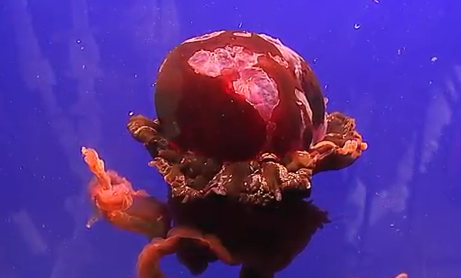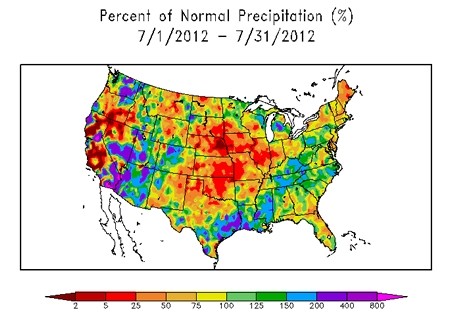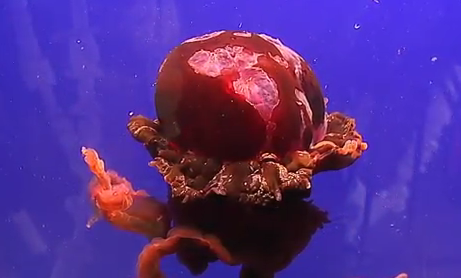
This black jellyfish (which looks a no-more-comforting blood red in this lighting, but black in the open water) can grow to the size of a trash can lid, and its sting packs a serious wallop. Normally these guys are a rare sight around the waters of San Diego; before this decade, they were spotted only about five times in 100 years. Since then, they’ve been seen an additional five times — i.e., still infrequently, but 10 times more often.
Wendy Spaulding of the Living Coast Discovery Center in Chula Vista says she’s not sure why the elusive black jellies are getting so comparatively bold, but that warming waters may play a part:
“It’s a big mystery and scientists are looking into it. We think it might have something to do with increased plankton blooms, so increased nutrients in the water making larger blooms of plankton, which these guys eat. It might also have to do with warming currents in the ocean,” she said [to KPBS].
You know what, I’m not even going to wait for confirmation on that. I’m just going to add “will cause giant, menacing black blobs to show up and sting you” to the list of potential climate change consequences. That ought to inspire people to get a move on.



